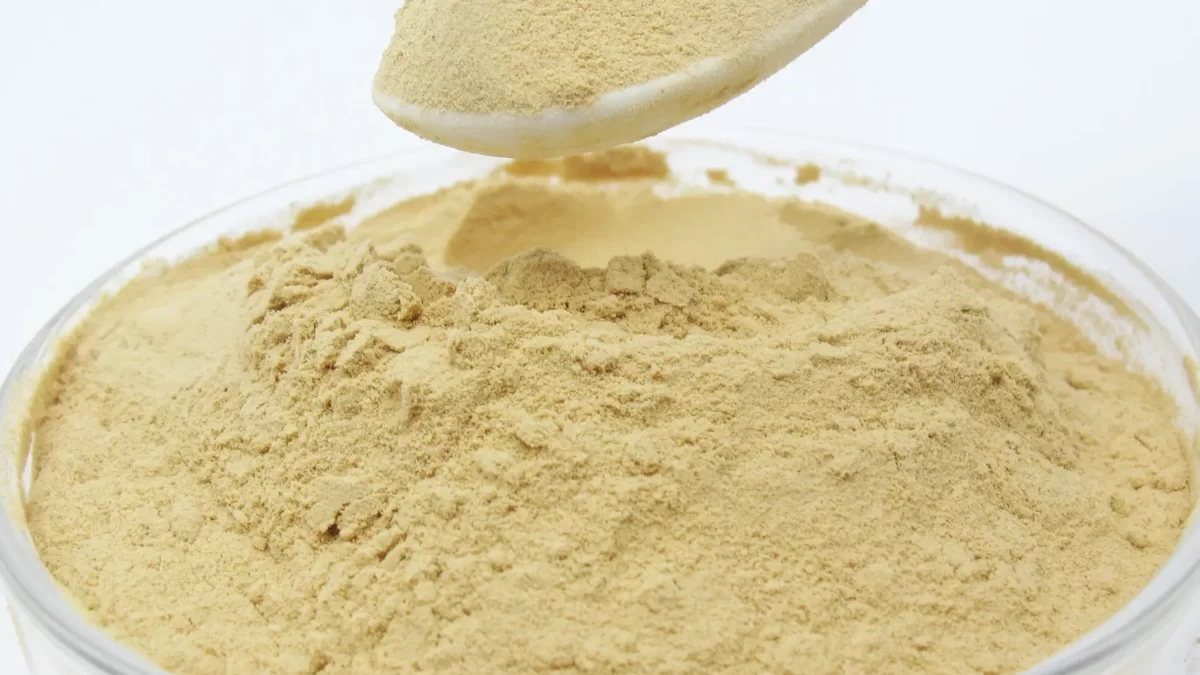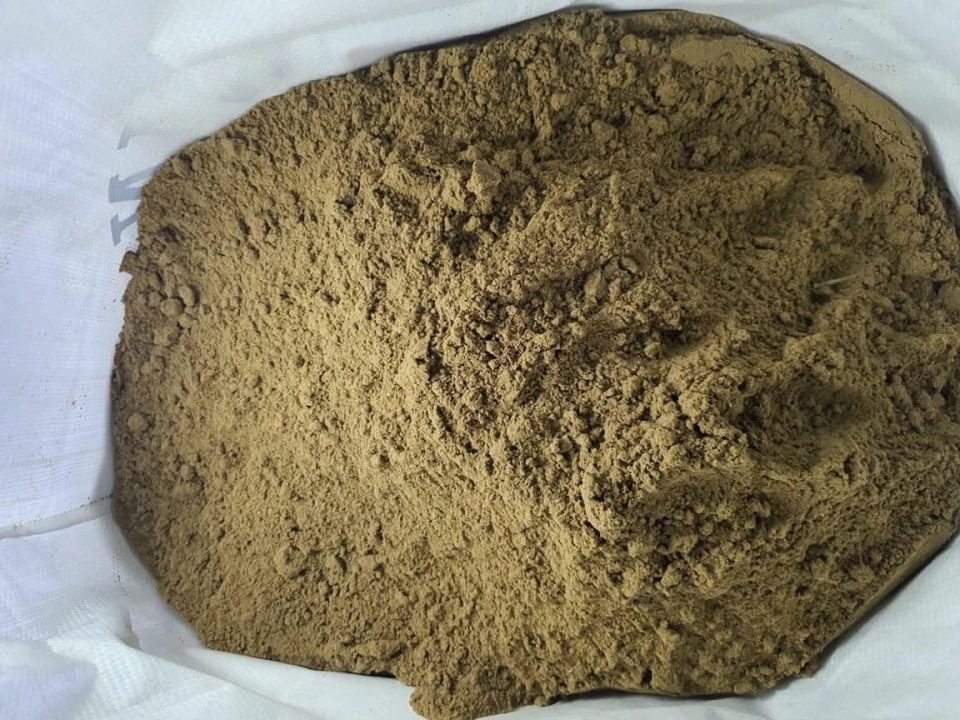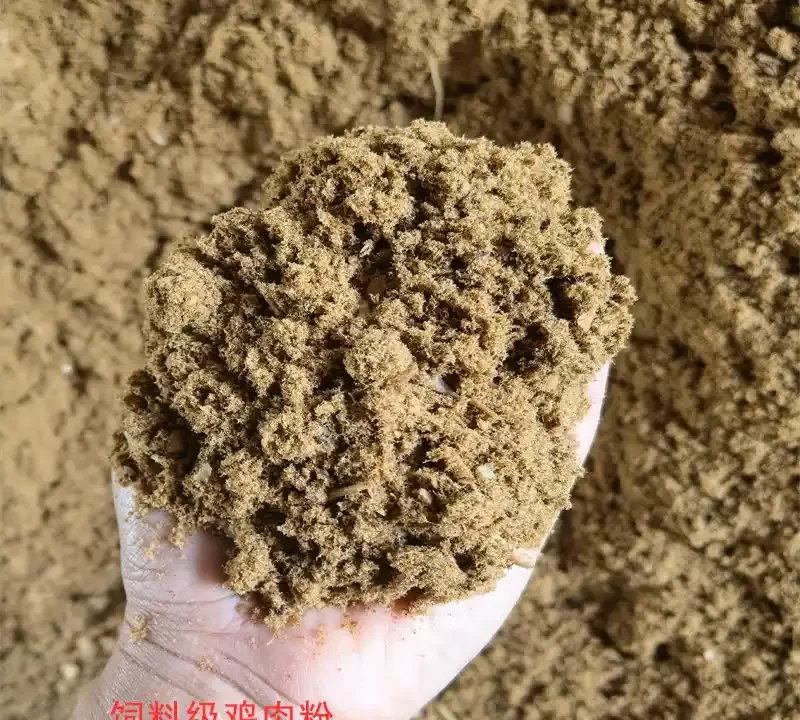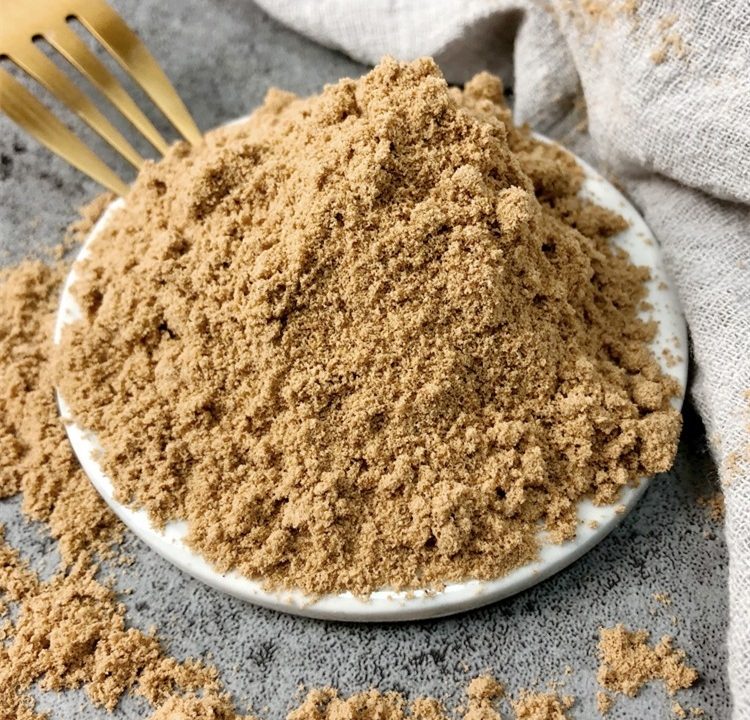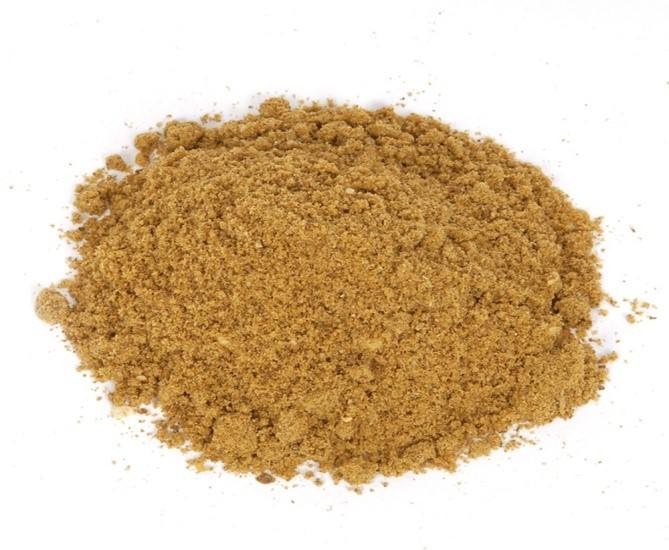Chicken Liver Powder

Differences Between Poultry By-Product Meal and Chicken Meal
May 3, 2025
Chicken Bone Powder
May 9, 20251. Overview of Chicken Liver Powder
Chicken liver powder is produced by rendering chicken livers, a nutrient-dense organ, into a dry, powdered form. It is valued for its high protein content, essential vitamins (especially A, B12, and folate), and minerals like iron and zinc. It is commonly used as a flavor enhancer in pet food, a nutritional supplement in animal feed, and sometimes in human culinary applications (e.g., as a seasoning or nutritional booster).
Product Information
Source Liver of domestic chicken
Appearance :Yellow powder
Purity : 99%
Description Pure Natural Chicken Liver Powder is made from high quality food grade chicken liver, processed deeply
and spray dried, retaining the original nutrients, flavor and color of fresh chicken liver. This product not
only greatly improves the flavor and palatability of pet food, but also has better nutritional function. It is
widely used in pet food and feed premix.
and spray dried, retaining the original nutrients, flavor and color of fresh chicken liver. This product not
only greatly improves the flavor and palatability of pet food, but also has better nutritional function. It is
widely used in pet food and feed premix.
Applications
Dry food for dogs and cats, pet snacks field. Recommended Addition Amount: Adding 1%-2% can
significantly improve the palatability of dry food. Adding 1%-10% can significantly improve the
palatability of snack foods. The exact amount should be considered according to the positioning and cost
of the product.
significantly improve the palatability of dry food. Adding 1%-10% can significantly improve the
palatability of snack foods. The exact amount should be considered according to the positioning and cost
of the product.
Storage and Shipping Information : Storage 2 years under well storage situation and stored away from direct sun light
2. Production Process
-
Sourcing: Fresh chicken livers are collected from poultry processing plants, ensuring they meet food safety standards (e.g., free from disease or contamination).
-
Rendering: The livers are cooked at 120–130°C to remove moisture and fat, then ground into a fine powder. This process kills pathogens and extends shelf life.
-
Drying: Spray drying or low-temperature dehydration is often used to preserve nutrients, especially heat-sensitive vitamins like vitamin A.
-
Quality Control: The final product is tested for microbial safety (e.g., Salmonella absent in 25g), heavy metals (e.g., lead ≤5 mg/kg), and nutritional consistency.
Key Note: Unlike chicken meal or poultry by-product meal, chicken liver powder is derived solely from livers, making it a more targeted ingredient with a distinct nutritional profile.
3. Standards for Chicken Liver Powder
Chicken liver powder must comply with regulatory standards similar to those for chicken meal and poultry by-product meal, but its unique composition requires additional focus on nutrient retention and organ-specific contaminants.
3.1 Regulatory Standards
-
AAFCO (Association of American Feed Control Officials): Defines chicken liver powder as a rendered product of chicken livers, free from added blood, feathers, or other extraneous materials. It must meet safety standards for pet food ingredients.
-
FDA: Requires compliance with 21 CFR Part 113 for thermally processed low-acid foods, ensuring microbial safety.
-
China (GB Standards): GB 2760 (Food Additive Standard) and GB 29921 (Pathogen Limits) apply, with limits on heavy metals (e.g., lead ≤5 mg/kg, cadmium ≤1 mg/kg) and microbial counts (e.g., total plate count ≤10,000 CFU/g).
3.2 Industry Standards
-
Protein Content: Typically ≥60%, reflecting the high protein density of livers.
-
Moisture Content: ≤5% to ensure shelf stability.
-
Vitamin A Content: Should retain ≥20,000 IU/100g, as livers are a rich source of vitamin A.
-
Absence of Additives: For “pure” or “natural” claims, it should be free from artificial flavors, colors, or preservatives.
4. Nutritional Composition and Parameters
Chicken liver powder is distinct for its nutrient density, particularly in vitamins and minerals. Below is a detailed breakdown, followed by a comparison with chicken meal and poultry by-product meal.
4.1 Nutritional Data Table
Table 1: Nutritional Composition of Chicken Liver Powder
|
Parameter
|
Chicken Liver Powder
|
Notes
|
|---|---|---|
|
Protein (%)
|
65.0 ± 2.0
|
High due to liver’s muscle content
|
|
Fat (%)
|
15.0 ± 1.5
|
Higher than chicken meal due to liver fat
|
|
Ash (%)
|
8.0 ± 0.5
|
Lower than by-product meal, less bone
|
|
Moisture (%)
|
4.0 ± 0.4
|
Ensures shelf stability
|
|
Vitamin A (IU/100g)
|
25,000 ± 2,000
|
Rich source, critical for pet health
|
|
Vitamin B12 (µg/100g)
|
50 ± 5
|
High, supports blood health
|
|
Iron (mg/100g)
|
20 ± 2
|
High, due to liver’s heme iron content
|
|
Digestibility (%)
|
80 ± 3
|
Comparable to chicken meal
|
4.2 Comparison with Chicken Meal and Poultry By-Product Meal
Table 2: Comparison of Chicken Liver Powder, Chicken Meal, and Poultry By-Product Meal
|
Parameter
|
Chicken Liver Powder
|
Chicken Meal
|
Poultry By-Product Meal
|
|---|---|---|---|
|
Source
|
Chicken livers only
|
Chicken flesh, skin, bones
|
Poultry organs, feet, heads
|
|
Protein (%)
|
65.0 ± 2.0
|
68.0 ± 1.5
|
62.0 ± 2.0
|
|
Fat (%)
|
15.0 ± 1.5
|
14.0 ± 1.0
|
12.0 ± 1.5
|
|
Ash (%)
|
8.0 ± 0.5
|
11.0 ± 0.8
|
14.0 ± 1.0
|
|
Vitamin A (IU/100g)
|
25,000 ± 2,000
|
500 ± 100
|
1,000 ± 200
|
|
Iron (mg/100g)
|
20 ± 2
|
5 ± 1
|
10 ± 2
|
|
Digestibility (%)
|
80 ± 3
|
83 ± 2
|
72 ± 3
|
|
Heavy Metal Risk (Lead, mg/kg)
|
3.0 ± 0.5
|
2.0 ± 0.3
|
4.0 ± 0.6
|
Analysis:
-
Protein and Digestibility: Chicken liver powder (65%) is slightly lower in protein than chicken meal (68%) but higher than poultry by-product meal (62%). Its digestibility (80%) is closer to chicken meal (83%) due to the absence of less digestible parts like feathers or beaks.
-
Micronutrients: Chicken liver powder excels in vitamin A (25,000 IU/100g) and iron (20 mg/100g), far surpassing both chicken meal and poultry by-product meal. This makes it a valuable ingredient for addressing nutritional deficiencies in pets.
-
Heavy Metal Risk: Chicken liver powder has a moderate risk of heavy metal accumulation (lead: 3.0 mg/kg) due to the liver’s role in detoxification, higher than chicken meal (2.0 mg/kg) but lower than poultry by-product meal (4.0 mg/kg).
5. Identification of Pure Natural Chicken Liver Powder
To identify pure natural chicken liver powder (free from additives or adulterants), methods similar to those for chicken powder can be applied, with adjustments for the liver’s unique composition.
5.1 Analytical Methods
-
Proximate Analysis: Confirms protein (≥60%), fat (10–15%), and low ash (≤8%). High ash may indicate adulteration with bone meal.
-
HPLC (High-Performance Liquid Chromatography): Measures vitamin A (retinol) and B12 levels to confirm liver-derived content. Expected: ≥20,000 IU/100g for vitamin A.
-
ICP-MS (Inductively Coupled Plasma Mass Spectrometry): Detects heavy metals (e.g., lead ≤5 mg/kg, cadmium ≤1 mg/kg) to ensure safety.
-
GC-MS (Gas Chromatography-Mass Spectrometry): Identifies volatile compounds specific to liver (e.g., heme-related aroma compounds) and confirms the absence of artificial flavors.
-
Microbiological Testing: Ensures low microbial counts (e.g., total plate count ≤10,000 CFU/g, Salmonella absent in 25g).
5.2 Sensory Indicators
-
Color: Deep reddish-brown to tan, reflecting the liver’s natural pigmentation.
-
Aroma: Strong, meaty, slightly metallic scent due to iron content.
-
Taste: Rich umami with a distinct liver flavor, no chemical aftertaste.
5.3 Chemical Indicators
-
High Vitamin A and Iron: Confirms liver as the primary source.
-
Absence of Additives: No MSG, artificial colors, or preservatives for “natural” claims.
6. Applications and Benefits
6.1 Pet Food
-
Flavor Enhancer: Chicken liver powder’s strong umami flavor makes it a natural palatant, encouraging pets to eat.
-
Nutritional Supplement: High in vitamin A (supports vision and immune health), B12 (blood health), and iron (prevents anemia). For example, 5% inclusion in kibble can meet AAFCO vitamin A requirements for dogs (5,000 IU/kg diet).
-
Hypoallergenic Diets: Single-source protein reduces allergenicity compared to poultry by-product meal.
6.2 Human Food (Limited Use)
-
Used in niche products like liver-flavored seasonings, broths, or nutritional supplements due to its nutrient density. However, its strong flavor limits widespread use.
6.3 Animal Feed
-
Added to poultry and swine feed to boost vitamin and mineral intake, especially in young animals needing rapid growth.
Benefit Over Chicken Meal/Poultry By-Product Meal: Chicken liver powder provides targeted micronutrients (e.g., vitamin A, iron) that are less abundant in chicken meal or poultry by-product meal, making it ideal for addressing specific nutritional needs.
7. Numerical Analysis of Quality
7.1 Statistical Comparison
Using data from Table 2, we can compare chicken liver powder with chicken meal and poultry by-product meal statistically.
-
ANOVA for Protein Content:
-
Chicken Liver Powder: 65.0 ± 2.0
-
Chicken Meal: 68.0 ± 1.5
-
Poultry By-Product Meal: 62.0 ± 2.0
-
Result: F(2, 9) = 6.5, p < 0.05 (significant differences). Chicken meal has the highest protein, followed by chicken liver powder.
-
-
ANOVA for Vitamin A Content:
-
Chicken Liver Powder: 25,000 ± 2,000 IU/100g
-
Chicken Meal: 500 ± 100 IU/100g
-
Poultry By-Product Meal: 1,000 ± 200 IU/100g
-
Result: F(2, 9) = 150, p < 0.001 (highly significant). Chicken liver powder is significantly richer in vitamin A.
-
7.2 Quality Scoring Model
A simple scoring model can quantify overall quality based on protein, digestibility, and micronutrient content:
Score = 0.4 × Protein (%) + 0.3 × Digestibility (%) + 0.2 × Vitamin A (IU/100g ÷ 1,000) + 0.1 × Iron (mg/100g)
-
Chicken Liver Powder: 0.4 × 65 + 0.3 × 80 + 0.2 × (25,000 ÷ 1,000) + 0.1 × 20 = 26 + 24 + 5 + 2 = 57
-
Chicken Meal: 0.4 × 68 + 0.3 × 83 + 0.2 × (500 ÷ 1,000) + 0.1 × 5 = 27.2 + 24.9 + 0.1 + 0.5 = 52.7
-
Poultry By-Product Meal: 0.4 × 62 + 0.3 × 72 + 0.2 × (1,000 ÷ 1,000) + 0.1 × 10 = 24.8 + 21.6 + 0.2 + 1 = 47.6
Interpretation: Chicken liver powder scores highest (57) due to its micronutrient density, despite slightly lower protein than chicken meal (52.7). Poultry by-product meal scores lowest (47.6) due to lower protein, digestibility, and micronutrients.
8. Challenges and Limitations
-
Vitamin A Toxicity Risk: High vitamin A content (25,000 IU/100g) can lead to hypervitaminosis A in pets if overused (AAFCO max: 250,000 IU/kg diet for dogs). Careful formulation is required.
-
Heavy Metal Accumulation: Livers can accumulate toxins (e.g., lead, cadmium), necessitating rigorous testing.
-
Flavor Intensity: The strong liver flavor may be unpalatable in high concentrations, limiting inclusion rates (typically 2–5% in pet food).
-
Shelf Life: High fat content (15%) increases the risk of rancidity, requiring antioxidants or proper storage.
9. Conclusion
Chicken liver powder is a nutrient-dense ingredient with a unique profile, excelling in vitamin A (25,000 IU/100g), B12 (50 µg/100g), and iron (20 mg/100g), making it ideal for pet food palatability and nutritional supplementation. Compared to chicken meal and poultry by-product meal, it offers superior micronutrient content but has a moderate protein level (65%) and higher heavy metal risk due to its organ source. Identification of pure natural chicken liver powder involves proximate analysis, HPLC for vitamins, and sensory evaluation for authenticity. Numerical analysis confirms its high quality (score: 57) for specific applications, though careful formulation is needed to avoid nutrient imbalances. It complements chicken meal in premium pet foods and provides a nutritional edge over poultry by-product meal for targeted health benefits.
Related posts
October 18, 2025
October 10, 2025
October 3, 2025


